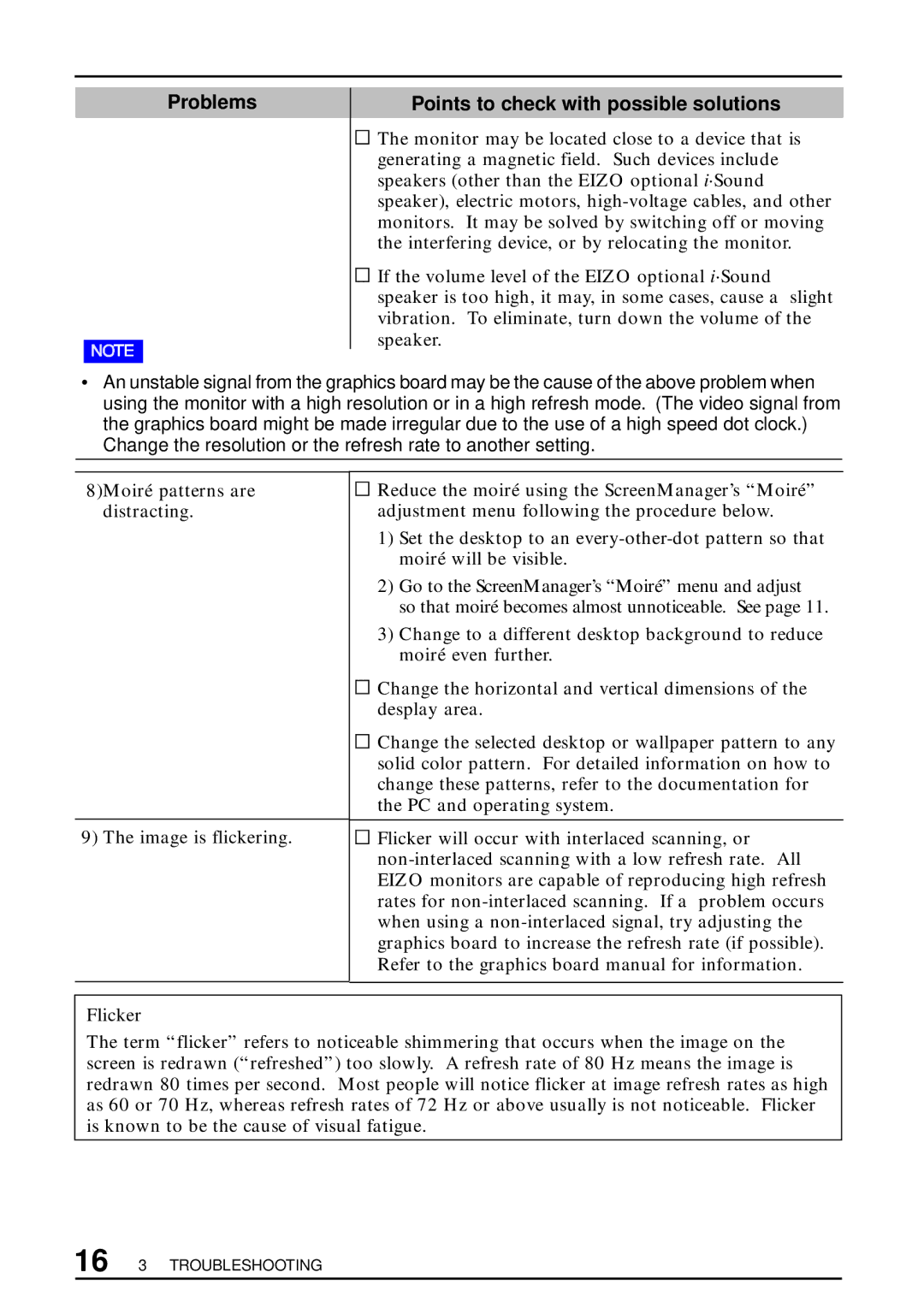
Problems
Points to check with possible solutions
![]()
![]() The monitor may be located close to a device that is
The monitor may be located close to a device that is
generating a magnetic field. Such devices include speakers (other than the EIZO optional i·Sound speaker), electric motors,
![]()
![]() If the volume level of the EIZO optional i·Sound speaker is too high, it may, in some cases, cause a slight vibration. To eliminate, turn down the volume of the speaker.
If the volume level of the EIZO optional i·Sound speaker is too high, it may, in some cases, cause a slight vibration. To eliminate, turn down the volume of the speaker.
•An unstable signal from the graphics board may be the cause of the above problem when using the monitor with a high resolution or in a high refresh mode. (The video signal from the graphics board might be made irregular due to the use of a high speed dot clock.) Change the resolution or the refresh rate to another setting.
8)Moiré patterns are distracting.
9) The image is flickering.
![]()
![]() Reduce the moiré using the ScreenManager’s “Moiré” adjustment menu following the procedure below.
Reduce the moiré using the ScreenManager’s “Moiré” adjustment menu following the procedure below.
1)Set the desktop to an
2)Go to the ScreenManager’s “Moiré” menu and adjust
so that moiré becomes almost unnoticeable. See page 11.
3)Change to a different desktop background to reduce moiré even further.
![]()
![]() Change the horizontal and vertical dimensions of the desplay area.
Change the horizontal and vertical dimensions of the desplay area.
![]()
![]() Change the selected desktop or wallpaper pattern to any solid color pattern. For detailed information on how to change these patterns, refer to the documentation for the PC and operating system.
Change the selected desktop or wallpaper pattern to any solid color pattern. For detailed information on how to change these patterns, refer to the documentation for the PC and operating system.
![]()
![]() Flicker will occur with interlaced scanning, or
Flicker will occur with interlaced scanning, or
Flicker
The term “flicker” refers to noticeable shimmering that occurs when the image on the screen is redrawn (“refreshed”) too slowly. A refresh rate of 80 Hz means the image is redrawn 80 times per second. Most people will notice flicker at image refresh rates as high as 60 or 70 Hz, whereas refresh rates of 72 Hz or above usually is not noticeable. Flicker is known to be the cause of visual fatigue.
16 3 TROUBLESHOOTING
